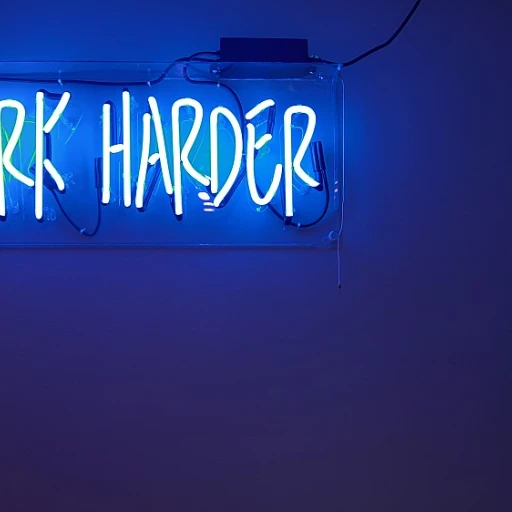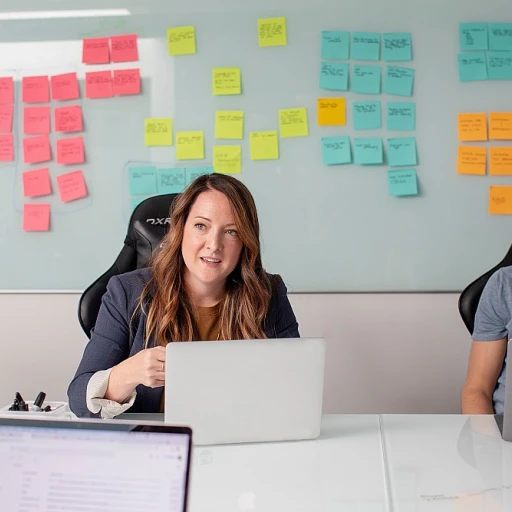Understanding the Need for Inclusive Hiring
The Growing Importance of Diverse and Equitable Recruitment
In today's ever-evolving job market, the significance of fostering diversity and inclusivity in recruitment efforts cannot be overstated. Organizations worldwide are recognizing the immense benefits of building teams that mirror the vast spectrum of our society. But it's more than just ticking a box for corporate social responsibility; it's about creating a work environment that thrives on the richness of varied perspectives, experiences, and ideas.
Recent studies have shown that companies that prioritize inclusive hiring practices tend to report higher levels of employee satisfaction and productivity. The reason? A diverse workforce brings an extensive range of viewpoints and innovative problem-solving approaches, driving the company toward success. Yet, achieving an inclusive hiring process requires a deep understanding of its foundational necessity.
Bridging Representation Gaps: Why It Matters
Underrepresentation of diverse groups in the workplace has long been a pressing issue. It's not just a matter of fairness; the lack of diversity can hinder a company's overall performance. Ensuring that all voices are heard and represented—be it through gender, ethnicity, age, or other dimensions of diversity—is vital to unlock the complete potential of a team.
Moreover, potential employees today are keenly observing how organizations handle diversity and inclusivity. This makes it imperative for organizations to build an image that is not only appealing but also authentic in its approach to representation. By demonstrating a genuine commitment to inclusive hiring, companies can attract top talent who value such principles.
For those interested in optimizing their recruitment strategy to better meet the demands of today’s diverse job seekers, exploring how to boost the hiring experience can offer valuable insights.
Crafting Inclusive Job Descriptions
Designing Job Descriptions with Inclusivity in Mind
Creating job descriptions that reflect an inclusive hiring approach is essential for organizations committed to embracing diversity and equity. A job description is often the first interaction potential candidates have with a company, making it a powerful tool for attracting diverse talent.
To begin with, the language used in job descriptions should be gender-neutral and free from jargon or complex terms that might deter potential candidates from diverse backgrounds. Terms like “rockstar” or “ninja”, for instance, could unintentionally alienate individuals who do not identify with such terminology.
Moreover, it is crucial to focus on essential skills and qualifications rather than a long list of desired attributes that may not be necessary for the role. This approach opens the door to a wider range of candidates who may possess the core competencies required but come from non-traditional or underrepresented backgrounds.
Specifying concrete flexibility options, such as remote work possibilities or flexible hours, can further make a job description appealing to a broad audience, including those who may need such arrangements due to personal or family commitments. Clearly stating a commitment to inclusivity and diversity at the forefront of the job posting also reinforces the organization’s dedication to building a diverse workforce.
For more insights on how to effectively integrate inclusivity at every step of the hiring process, check out our
guide to success in boosting the hiring experience.
Improving the Candidate Experience
Enhancing the Candidate Journey
Creating an inclusive hiring experience is not just about adjusting job descriptions and tackling unconscious bias. A crucial component in this journey is how we handle the interactions and touchpoints that candidates encounter during the hiring process.
An inclusive candidate experience begins with clear and consistent communication. Candidates should always know what to expect next in the process, whom they should contact for questions, and have access to resources or tips that could help them succeed. This level of transparency not only enhances their experience but also creates a sense of trust and respect between the organization and the candidate.
Technology can be your organization's ally in this endeavor. Automated systems can send updates, schedule interviews, and even provide instant feedback. More than just enhancing efficiency, these tools contribute greatly to a positive candidate journey, ensuring that no one feels left in the dark.
Moreover, it's essential to tailor the candidate experience to cater to a diverse pool of applicants. This could include providing interview accommodations for individuals with disabilities or adopting non-traditional interview formats, such as virtual meetings, to remove geographic barriers.
By focusing on improving the candidate experience through better communication, companies can not only attract a wider array of talent but also increase the likelihood of retaining top candidates who feel valued throughout their journey.
Addressing Unconscious Bias in the Interview Process
Addressing Implicit Bias in Interviews
Creating an inclusive hiring experience involves tackling one of the most complex challenges of the recruitment process: unconscious bias. While many organizations strive to embrace diversity, implicit biases can subtly influence decisions, leading to a less equitable selection of candidates.
Unconscious biases are ingrained stereotypes that affect our understanding and actions without our awareness. To mitigate their impact, it's essential to foster an environment that acknowledges these biases and actively works to counteract them. One effective way to do this is through training programs that educate hiring managers and interviewers on recognizing and minimizing these biases.
Implementing structured interviews can also play a significant role in limiting bias. A structured interview process ensures that each candidate is evaluated based on the same criteria and questions. This consistency can help prevent bias from affecting the assessment of candidates' qualifications or potential.
Another strategy involves diversifying the panel of interviewers. A varied team of interviewers brings a rich assortment of perspectives and diminishes the likelihood of biased judgment. Diversity in the interview panel reflects the organization's commitment to inclusivity and can provide a fairer assessment of candidates.
Analyzing interview feedback collectively and anonymously can further help in recognizing patterns of bias. By removing identifying information, the assessment of candidates can focus solely on qualifications and performance.
As we have explored in previous sections, crafting inclusive job descriptions and enhancing the candidate experience are foundational to inclusive hiring. Addressing unconscious biases during interviews is another crucial layer that ensures all candidates are treated fairly and equitably, leading to a diverse and inclusive workforce.
Leveraging Employee Resource Groups (ERGs)
Harnessing the Power of Employee Resource Groups (ERGs)
In the journey towards a more equitable hiring process, employee resource groups (ERGs) emerge as a unique and valuable asset. ERGs consist of voluntary, employee-led groups whose aim is to foster a diverse, inclusive workplace aligned with the organizational mission, values, and goals. These groups are typically formed around a shared identity or experience, such as gender, culture, disability status, or sexual orientation. By leveraging the insights and experiences of ERGs, organizations can significantly enhance their inclusive hiring efforts.
One of the primary benefits ERGs offer is their potential to provide invaluable perspectives and feedback on job descriptions and postings. Their insights help ensure that job descriptions are inclusive and free from bias, which is crucial for attracting a wide range of applicants. Drawing on their unique experiences, ERG members can highlight unintentional language barriers, outdated assumptions, and oversights that may deter diverse candidates from applying.
ERGs also play a crucial role in refining the candidate experience. By offering their lived experiences and insights, ERGs can help tailor communications and interactions to be more inclusive and considerate of diverse backgrounds. This better supports candidates throughout the interview process, ensuring that their experience is positive and welcoming.
Moreover, involving ERGs during the interview process can help address any unconscious biases by providing diverse perspectives. ERG members can serve as observers or participants in interviews to help promote fairness and inclusivity. Not only does this tactic mitigate potential biases, but it also ensures that the selection process is evaluated through a broader, more diverse lens.
Finally, ERGs provide continuous feedback and help track progress regarding diversity and equity initiatives. By actively engaging with ERGs, organizations can regularly assess the effectiveness of their diversity policies and practices, fostering a continuous improvement cycle.
In the broader context of creating an inclusive hiring environment, employee resource groups play a pivotal role. By tapping into the knowledge and support ERGs offer, organizations can craft hiring experiences that not only welcome diversity but actively promote equity and inclusion, aligning with the best practices outlined in previous sections of this narrative.
Implementing Best Practices for a Diverse Workforce
### Best Practices for Sustaining a Diverse Talent Pool
Developing and executing inclusive hiring strategies is a continuous journey rather than a one-time task. Organizations that are committed to fostering an environment characterized by diversity, equity, and inclusion must focus on establishing best practices that can sustain and nurture a diverse workforce.
The foundation of these practices lies in understanding the essential elements of inclusive hiring across the stages of recruitment. Building upon previous discussions on tailoring job descriptions to appeal to a wider audience and creating an empathetic candidate experience, it is crucial to ensure ongoing education and adaptation within your organization.
Continuous Learning and Development
An essential component of sustaining diversity is continuous learning. Organizations should offer regular training sessions focused on equity and inclusion, while providing opportunities for employees to enhance their understanding of diverse perspectives. Workshops and seminars can address topics ranging from cultural sensitivity to removing unconscious bias, reinforcing the principles discussed in our examination of addressing biases during interviews.
Inclusive Leadership Training
Leaders play a pivotal role in fostering an inclusive work environment. It is essential for managers and HR professionals to be equipped with the necessary skills to lead diverse teams effectively. Providing leadership training tailored to promoting inclusivity can empower leaders to make decisions that honor diversity, fostering a supportive work culture.
Regular Review of Hiring Practices
Another key strategy for sustaining an inclusive workforce is conducting regular reviews of existing hiring practices. By analyzing the efficacy of job descriptions, recruitment processes, and selection criteria, organizations can make informed adjustments that align with their goals of equity and inclusion. Implementing feedback mechanisms from the hiring process itself can provide insights into areas for improvement.
Engagement with Employee Resource Groups (ERGs)
Leveraging the expertise and insights of Employee Resource Groups can significantly contribute to maintaining diversity in the workplace. These groups often have firsthand understanding of the challenges faced by diverse employees. Encouraging active engagement and collaboration with ERGs can help shape policies and initiatives that resonate with varied employee experiences, supporting equity in alignment with previous discussions on their importance.
By cultivating these best practices, companies can aim to create an evolving workplace environment that truly embodies inclusivity. Embracing diversity through an ongoing commitment to equitable hiring will not only enhance the organizational culture but also unlock the potential of a broad range of talent.













